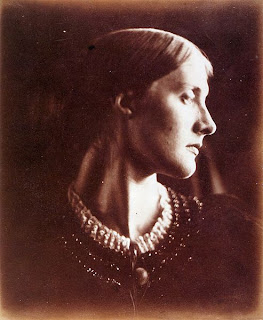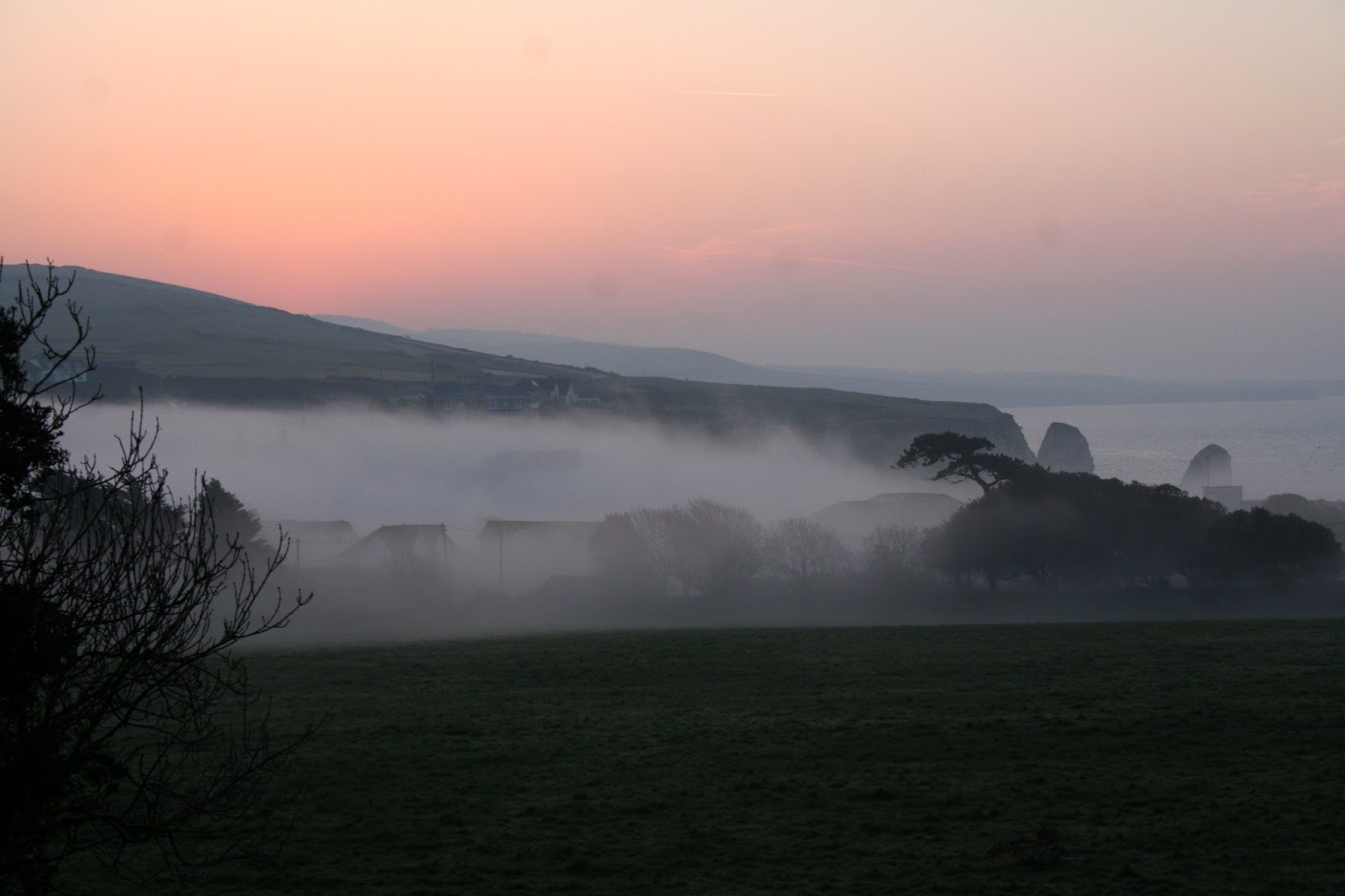This little Tale from the Bookroom, was certainly not on my agenda! I've been a bit quiet on the post-front I know- well my dear- it's all because I made fun about someone who didn't exist.
I know Emily, that doesn't make sense, and I shall try at the end of this little tale, to draw a useful moral from it for you.
So this is how it goes...
I'm genning up on Anne Thackeray-Ritchie currently, as you know. Since my interest became a focus on Julia's style and her direct influence here on Bloomsbury and its' set, Anny has become a key-player. The more I read about her- the more I feel this- and focussing on her, reflects back on getting more of a sense of who Julia was in a funny sort of way.
Just today, I read a little piece in this book 'The Hidden Houses of Virginia Woolf and Vanessa Bell' by Vanessa Curtis. It was about Anny and how Julia took some responsibility for predicting her Brother-In -Law- Leslie Stephen's romantic attachment with Julia's niece Julia Duckworth. Apparently Julia put it about that they met at a Ball at Dimbola. This is amusing, as an insight into Julia- who more than once felt she was solely responsible for romantic unions, and also that she called such a gathering a 'Ball, held in the panelled Ball-room at Dimbola'. Unless the gallery where the shop is now located was once panelled ( we shall have to investigate more, ) then the room referred to is the Entrance Hall, which as a Ballroom wouldn't have had a lot of space for dancing! Anyhow, all food for thought.
So, back to my bother. I had begun the last blog-post with Anny's famous quote-
'Is there no one who is commonplace here? Is everybody either a poet, or a genius, or a painter, or peculiar in some way?'
It struck me then, as it strikes me again particularly over the last week that some things don't change!
I made the quote into a Poster for the Tearoom as my Chairman requested, and that should have been that really.
But it wasn't.
Amongst my emails were a thread that had been sent as a 'round-Robin' by someone locally. I don't always get round to reading these I'm ashamed to say, though I mean to, but saw my name come up in some of the text. So, I opened it, and read that I was allegedly 'looking for Hilda Norris'. Oh hec, I thought ( explanation later ) how did that happen? Then, I read further- aghast to see that not only had I been flagged up as looking for someone- but that 'apparently, she was the only 'commonplace' woman ever to enter Dimbola'. Followed to my dismay, by a series of people suggesting families of that name who had resided in Freshwater! Oeer...
I thought back- and can only surmise this.. After I've put up a blog-post, the link goes to my own facebook page- which is locked down to my friends only.
I received a comment after the last one- containing a jesting bit of banter about a spoof bit of research someone had done about one- Hilda Norris 'allegedly the only commonplace woman to enter Dimbola', to which I had jokingly responded that this fellow should come along to Lynn Truss' talk and see if she knew anything about her. Lynn's fabulous Novel Tennysons-Gift is a suggestion of how characters might have related to each other, and very much the spirit of the tradition of the lampoon, the satire, spoof and humorous conjecture that Dodgson himself championed.
So, light-hearted banter ended there- but grew into a right little monster for me in this email thread. I interjected quite innocently at the time- to say it was not serious. Then, all of a sudden, I became the Hell-Monstress who had 'wasted people's time, and obviously wasn't a Founder Member of the JMCT'.
Oh my, Emily- I hadn't seen that one coming! Apparently, the fellow who had the gall to make her up is now being sought out for a flogging too...
Red-rag to Freshwater Bull, now it seems, that quite without my help or hindrance, the lovely Hilda has begun to take on a life of her own. Her name keeps cropping up here and there, with anecdote and rumour. The Board gave her several 'asides' last week at their meeting. Several volunteers now give her regular mention- and a member of Staff suggested that the family here-abouts by the name of Norris might like to join in the fun.
So, Emily- time to draw some sort of moral for my little Grandaughter with the supposed wisdom I have gleaned over the years. Maybe I should start theorising to you about not putting your head above any parapets. Or, that the Evil Facebook is to be eschewed for all time. Or, that you should take life a little more seriously than your feckless Grandmother has done.
But Emily, looking at your little mischievous face, and flattering myself that I know something about your essence of character, I say this...
Do you think Hilda was a Gardener- and she spent most of her time in this little potting shed?
And Emily, don't you think perhaps that her alleged illegitimate Great-Great-Grandaughter whose 'autograph' my dear friend Bob found in a book inside cover today for me...
might have been the Lady who said...
" There isn't anyone who is commonplace here. Everybody is either a poet, or a painter, or peculiar in some way ".
( Though Em, apparently, allegedly, she only said that to counter the slur on her Great-Great-Grand-Mother's commonplace-ness, and has been heard to mention somewhat agressiveley at times- after all she now resides at the Nook nursing home- that her Great-Great-Grandmother's autobiographical 'Tales from the Potting Shed' were- contrary to popular belief, not all burned by the family. )
I do know that your Great-Grandad would have approved, if he had been lucky enough to be here still and know you.
That's good-enough for me.
A tout-a l'heure Emily!
Your ever-loving Grand-mother GiGi xxx


















